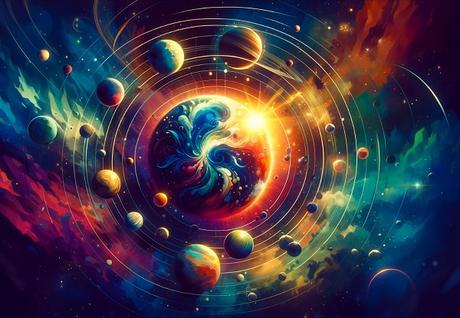
The Solar System, a vast and awe-inspiring frontier beyond our wildest imaginations, is filled with celestial wonders and cosmic phenomena. While we often gaze up in awe at the familiar beacons of the night sky—the glowing Moon, the shimmering rings of Saturn, or the red hue of Mars—there’s much more to our Solar System than meets the eye. Beyond these well-known sights lie hidden gems and peculiar facts that reveal the complexity and diversity of the space we inhabit. In this article, we embark on a journey through the cosmos to explore ten lesser-known facts about the Solar System. These intriguing insights will not only broaden your understanding of our celestial neighbourhood but also leave you in awe of the endless mysteries waiting to be discovered. So, buckle up and prepare to be astonished by our Solar System’s secrets.
Fact 1: The Sun’s Massive Influence
At the heart of our Solar System lies the Sun, an enormous energy source and gravity. Its gravitational force keeps our planetary system in orbit, dominating the dynamics of our cosmic vicinity. This central star holds over 99.8% of the Solar System’s total mass, illustrating its incredible influence.
Fact 2: Venus’ Rotation
Venus, often cited as Earth’s sister planet due to its similar size and composition, holds a peculiar secret. It rotates on its axis, opposite most planets in our solar system. This retrograde rotation means that the Sun rises in the west and sets in the east on Venus. Moreover, Venus has the longest rotation period of any planet, making its day longer than its year.
Fact 3: The Mystery of Mars’ Moons
Mars is accompanied by two small moons, Phobos and Deimos, both of which are thought to be captured asteroids based on their composition and irregular shape. These moons orbit so closely to Mars that they move faster than the planet rotates, crossing the sky in just a few hours.
Fact 4: Jupiter’s Fading Great Red Spot
Jupiter’s Great Red Spot, a colossal storm larger than Earth, has been a striking feature in our telescopic views for centuries. However, recent observations have revealed that the storm is shrinking and its vibrant red hue is fading. Scientists are eagerly studying these changes to gain a deeper understanding of Jupiter’s atmospheric dynamics.
Fact 5: The Density of Saturn
Despite being the second-largest planet in our Solar System, Saturn is surprisingly light. If you could find a bathtub large enough, Saturn would float. The planet is mainly made of hydrogen, which contributes to its exceptionally low density relative to its size.

Fact 6: The Tilted Axis of Uranus
Uranus presents another peculiar case. It orbits the Sun on its side, with an axial tilt of about 98 degrees. This extreme tilt results in extreme seasonal variations, with the Sun shining directly on each pole for 42 consecutive Earth years.
Fact 7: Neptune’s Wind Speeds
Neptune, though farthest from the Sun, hosts some of the most extreme weather in the Solar System. It has the fastest recorded wind speeds, reaching up to 2,100 kilometres per hour, nearly supersonic and much faster than any winds Earth has ever experienced.
Fact 8: The Heat of Mercury
Did you know that despite being the closest planet to the Sun, Mercury is not the hottest? Its surface experiences temperature fluctuations ranging from -180°C to 430°C. The lack of a significant atmosphere allows daytime heat to quickly dissipate into space, preventing it from being the warmest planet. What other surprising facts about Mercury can you share?
Fact 9: Haumea’s Ring
Among the myriad of objects beyond Neptune, Haumea stands out with its ring system, which was discovered in 2017. This elongated dwarf planet is one of the only known bodies in the Kuiper Belt to possess a ring, challenging our understanding of ring dynamics.
Fact 10: The Heliosphere’s Tail
The heliosphere envelops our Solar System, a vast bubble of charged particles emanating from the Sun, protecting us from galactic cosmic radiation. As we move through interstellar space, the heliosphere drags behind a tail, much like a comet. This tail is formed by the solar wind interacting with the interstellar medium.
Exploring these lesser-known facts not only enriches our understanding of the Solar System but also deepens our appreciation for its constituents’ intriguing and sometimes bizarre nature. As we continue to study these celestial phenomena, we uncover more about the fundamental processes that govern our planetary system and those across the galaxy, leading to new scientific discoveries and insights.
Did any of these facts surprise you, or do you have other lesser-known tidbits about our Solar System to share? We’d love to hear your thoughts and insights. Join the conversation below, and if you’re eager to dive deeper, check out our other articles and resources linked here.

